10 Markets Where Housing Prices Have Risen the Most
Eight years after one of the most severe housing market downturns in history, the slow recovery has finally stanched the bleeding of existing home values.
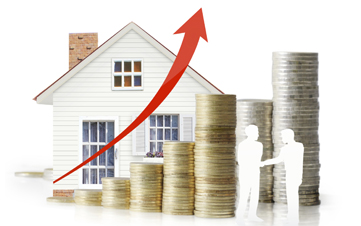
Eight years after one of the most severe housing market downturns in history, the slow recovery has finally stanched the bleeding of existing home values. In the past year (ending June 30), home prices rose in 371 of the 401 metro areas tracked by CoreLogic, a data and analytics company, pushing the median price for existing homes to $185,038. For people who have waited for prices to rise so they can sell their home or refinance their mortgage, that’s good news. However, in some metro areas, it has diminished affordability for first-time home buyers.
These 10 metro areas (as defined by the U.S. Census) have experienced the largest increases, ranging from 11.4% to 20.5%, in existing single-family home prices among cities with population of more than 250,000 for the year ending June 30. Please take a look.
BENCHMARK STATISTICS NATIONALLY (ALL ARE MEDIANS): One-year change in home prices: 7.5%. Home price: $185,038. Change in price since 2006 peak: -12.9%. Months' supply of homes: 5.5 months. Unemployment rate: 6.3% (seasonally non-adjusted). City-specific unemployment rates that follow are non-adjusted. Rate of job growth: 1.8%. Distressed sales: 15.5%.
Disclaimer
All home-price data is for existing single-family homes only (including distressed sales) and comes from CoreLogic. Distressed sales statistics are from CoreLogic. Sales, supply and other market data come from national and regional associations of Realtors.
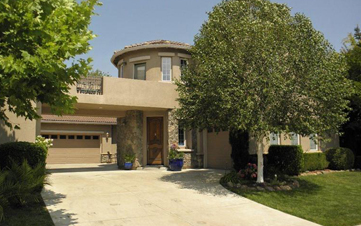
1. The San Francisco Bay Area
- Jump in price: 13.4% - 20.5%
- Median price: $300,000 - $925,000
- Change since 2006 peak: 1.7% - 32.4%
- Distressed sales: 6.5% - 24.6%
- Months' supply of inventory: 2.3 to 3.2
- Unemployment rate: 4.3% to 6.7%
- Rate of job growth: 1.4% to 3.2%
Demand has outstripped supply in the nation’s most-expensive housing market for decades. This is what happens when high population growth meets geographic and regulatory constraints on new housing construction. Yet another tech boom fueled by an influx of social media companies to the Bay Area (San Francisco, Oakland, Vallejo) are again driving up home prices, which have regained all but a small percentage (-1.7%) of the value lost since the peak of the market in 2006.
Workers seeking more-affordable housing have pushed up prices in the East Bay, including Oakland and Vallejo, although they have a ways to go to recapture value lost because of the foreclosure crisis and Vallejo's bankruptcy in 2008.
Inventory in the Bay Area is supertight. Homes sell in about a month or less, on average.But over the past year, sales have dropped slightly in the region but by almost one-fourth in San Francisco, diminishing that upward push on prices.
See more features of this home and
see more listings in this area on
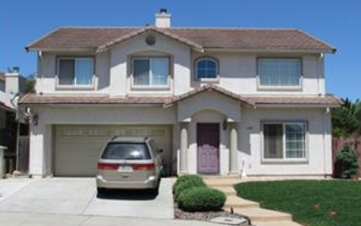
2. The Central Valley of California
- Jump in price: 17.3% to 19.6%
- Median price: $175,000 to $427,500
- Change since 2006 peak: 27.2% to 39.1%
- Distressed sales: 25.4% to 28.8%
- Months' supply of inventory: 3 to 4.3
- Unemployment rate: 7% to 12.3%
- Rate of job growth: 0.5% to 2.5%
Behold the power of a price bounce-back. Rates of unemployment in the Valley's cities (Merced, Modesto, Salinas, and Stockton) are still higher than in California's coastal cities (Merced's is the highest, at 12.3%). But traditional buyers have returned, especially at the northern end of the valley, says Folsom, Calif., regional housing economist Greg Paquin. They're coming from--you guessed it--the Bay Area in search of affordable homes. The lower a city's median home price, the greater the increase in sales over the past year. Inventory is tight throughout the region.
The housing bust was brutal here. Buyers seeking affordability, investors betting on a quick flip, and easy lending practices had driven home prices far beyond what local economies could justify. When the bubble burst, prices plummeted and are still down by about one-third from their peak. And distressed sales (short sales and bank-owned properties) still make up about one-fourth of all home sales.
See more features of this home and
see more listings in this area on
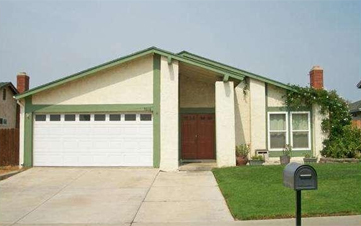
3. Riverside-San Bernardino, Calif.
- Increase in home price: 15.9%
- Median price: $262,000
- Change since 2006 peak: -30.8%
- Distressed sales: 24.4%
- Months' supply of inventory: 4.1, Riverside; 4.5, San Bernardino
- Unemployment rate: 8.4%
- Rate of job growth: 2.8%
Located about 60 miles east of Los Angeles, the "Inland Empire" of Riverside-San Bernardino is a major distribution hub for the southwestern U.S. It has seen continual population growth, even during the housing crisis, as people have come for jobs and housing that is affordable compared with coastal Southern California, according to Marcus & Millichap, a commercial real estate brokerage company in Calabasa, Calif.
Home prices here are still down by almost one-third from their peak, and inventory still somewhat favors sellers. However, over the past year sales have flattened in Riverside and fallen somewhat in San Bernardino.
See more features of this home and
see more listings in this area on
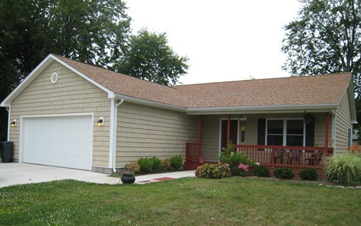
4. Warren, Mich.
- Increase in home price: 13.4%
- Median price: $148,000
- Change since 2006 peak: -19.6%
- Distressed sales: 23.3%
- Months' supply of inventory: 2.7, Macomb; 3.3, Oakland
- Unemployment rate: 8.5%
- Rate of job growth: 0.4%
This area north of Detroit has benefited from newfound confidence in the Motor City metro area economy. “During the recession, a lot of our manufacturing base shrank,” says Vicky Rad, deputy director of the Macomb County Department of Planning and Economic Development. “Now, businesses are growing, investing and hiring.” With stronger demand from buyers and limited inventory, bidding wars erupted, homes have sold quickly, and home prices have spiked. In July, both Macomb and Oakland counties had sellers' markets, as Macomb had just 2.7 months' supply and Oakland had just 3.3 months' supply, according to Real Estate One, a brokerage company.
However, in July sales increased by just 3.5% in Macomb and fell (-5.5%) in Oakland from the year before, according to the Michigan Realtors. Would-be sellers may be heading into a slower, more normal market. "The wild activity stories that you are hearing may be becoming less plentiful," cautions Real Estate One.
See more features of this home and
see more listings in this area on
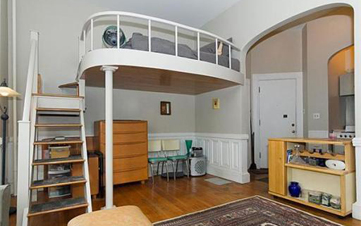
5. Boston, Mass.
- Increase in home price: 12.5%
- Median price: $379,950
- Change since 2006 peak: 0%
- Distressed sales: 3.7%
- Months' supply of inventory: 2.1
- Unemployment rate: 5.2%
- Rate of job growth: 1.6%
Skyrocketing rents are driving many first-time home buyers and investors into Boston's housing market. With just 2.1 months' supply in greater Boston and the inventory of homes for sale falling, the pickings are slim. Bidding wars have erupted in choice neighborhoods, such as Brookline, Cambridge, Charlestown, downtown and South Boston. "They've driven the average sale price to 5% over the asking price," says Mark Hickey, a real estate economist with the Boston-based CoStar Group.
Hickey doesn't think prices are overheated because, after the bust, they stayed flat for so long that they're still far below their historical growth rate. They may flatten again, though, as higher prices push home buyers to look further afield (this may already be happening, as sales fell by 5% from a year ago in June). Homeowners may realize their market is hot and choose, finally, to put their homes up for sale, which could increase inventory.
See more features of this home and
see more listings in this area on
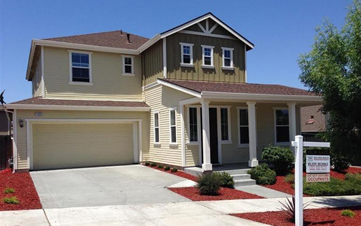
6. Santa Rosa, Calif.
- Increase in home price: 12.3%
- Median price: $434,250
- Change since 2006 peak: -20.8%
- Distressed sales: 10.9%
- Months' supply of inventory: 3.1
- Unemployment rate: 5.3%
- Rate of job growth: 3.7%
A gateway to the wine country of Sonoma and Napa counties, Santa Rosa's burgeoning “grape” economy provides retail, medical and other services to growing numbers of retirees who have resettled from the more expensive Bay Area, as well as "pre-retirees" who vacation in the area. The rate of job growth here is even higher than in the Bay Area.
The metro area has seen successive waves of investors, first-time home buyers and, most recently, move-up buyers, all looking for deals and driving up prices. However, Sally Crain, president-elect of the North Bay Association of Realtors, in Santa Rosa, says that rapid price increases have mostly stopped and that the housing market is more normal than it has been in a long time. Sellers still enjoy an advantage with tight housing inventory (3.1 months' supply in June), and sales remain reasonably quick. The recent earthquake could also impact sales.
See more features of this home and
see more listings in this area on
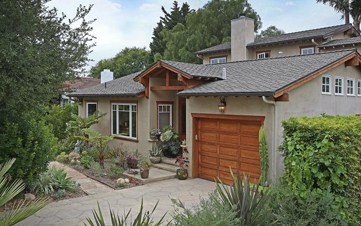
7. Santa Barbara, Calif.
- Increase in home price: 12%
- Median price: $470,000
- Change since 2006 peak: -22%
- Distressed sales: 14.1%
- Months' supply of inventory: 4
- Unemployment rate: 5.4%
- Rate of job growth: 0.6%
Real estate in these charming Pacific coast towns (including Santa Maria) attracts both investors and second-home owners. Available inventory (4 months' supply in June, which favors sellers) is below the national average, says Mark Schniepp, an economist in Santa Barbara. And faced with scarce, expensive land, as well as significant regulation, builders won't build many new homes.
Typical Santa Barbara home prices range from $750,000 to $2 million, Schniepp says. Santa Maria, which has somewhat more land available for development, has a more affordable median home price in the high $200s.
See more features of this home and
see more listings in this area on
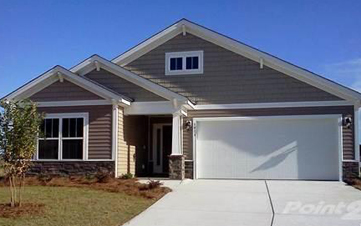
8. Myrtle Beach, S.C.
- Increase in home price: 11.7%
- Median price: $175,000
- Change since 2006 peak: -22%
- Distressed sales: 16.7%
- Months' supply of inventory: 8.3
- Unemployment rate: 5.5%
- Rate of job growth: 4.3%
Home prices have seen a solid uptick in these sunny beach-and-golf towns over the past year, says Laura Crowther, CEO of the Coastal Carolinas Association of Realtors. Distressed sales are down. But buyers of primary residences, vacation homes and investment properties still have the advantage, with 8.3 months' supply of single-family homes and 11 months' supply of condos. In June, single-family home sales rose by 10% from a year ago, while condo sales fell slightly (by about 2%). And there's a good bit of new construction, says Crowther. Ample supply could undercut future increases in home prices.
See more features of this home and
see more listings in this area on
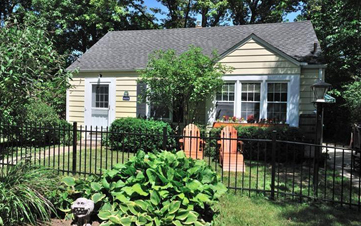
9. Ann Arbor, Mich.
- Increase in home price: 11.4%
- Median price: $194,000
- Change since 2006 peak: -10.5%
- Distressed sales: 16.6%
- Months' supply of inventory: 5.7
- Unemployment rate: 5.7%
- Rate of job growth: 1.6%
The University of Michigan drives much of Ann Arbor’s local economy and insulated it from the worst of the housing crash. Drug manufacturer Pfizer left town in 2007, but the university’s aggressive real estate development projects and ongoing recruiting efforts for faculty and staff continue to attract a steady stream of new residents, shoring up demand. The housing supply has been tight, particularly for newer homes.
The 2006-07 housing market crash brought new construction to a halt. Buyers were left to snatch up what was left, often with stiff competition and at higher prices. But most of the stalled construction projects have since taken off, which should bolster the supply of new homes. Residential listings have increased by almost one-fourth, while sales have fallen a bit over the past year. In June, Washtenaw County had 5.7 months' supply of homes, close to the national median of 5.5 months and within the range of balanced between buyers and sellers. Those trends should diminish upward pressure on home prices.
See more features of this home and
see more listings in this area on
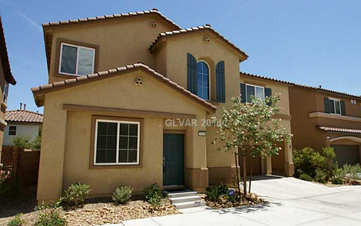
10. Las Vegas
- Increase in home price: 11.4%
- Median price: $179,900
- Change since 2006 peak: -39.1%
- Distressed sales: 24.9%
- Months' supply of inventory: 5.2
- Unemployment rate: 7.9%
- Rate of job growth 3.1%
What happened in Vegas epitomized the housing bust. It was a tale of overbuilding, rampant flipping and subprime lending, followed by recession, with sharp increases in local unemployment and foreclosures.
"But we survived, and we're back!" says Heidi Kasama, president of the Greater Las Vegas Association of Realtors. She gives price benchmarks for boom, bust and recovery: At the peak of the market in Las Vegas, the median home price was $315,000. In early 2012, it bottomed at $118,000. This spring it was approaching $200,000. "We've seen rapid run-ups in prices year-over-year, but that's because we were so undervalued," says Kasama. Home prices are still down by 39% since the peak, and in the past few months, she says, price increases have been diminishing. Sales have fallen by 10.2% from the year before, too. Supply is balanced between sellers and buyers.
See more features of this home and
see more listings in this area on
Get Kiplinger Today newsletter — free
Profit and prosper with the best of Kiplinger's advice on investing, taxes, retirement, personal finance and much more. Delivered daily. Enter your email in the box and click Sign Me Up.

-
 Who Pays the Most Taxes in the U.S.? Tax Burden by Age
Who Pays the Most Taxes in the U.S.? Tax Burden by AgeTax Burden Polls show that most people feel like taxes are unfair. But which age group bears the brunt of the tax burden in the United States?
By Kelley R. Taylor
-
 Tax Day 2025: Don’t Miss These Freebies, Food Deals and Discounts
Tax Day 2025: Don’t Miss These Freebies, Food Deals and DiscountsTax Day You can score some sweet deals on April 15 in some select restaurants like Burger King, Shake Shack, and more.
By Gabriella Cruz-Martínez
-
 12 Great Places to Retire in the Midwest
12 Great Places to Retire in the MidwestPlaces to live Here are our retirement picks in the 12 midwestern states.
By Stacy Rapacon
-
 10 Cheapest Small Towns to Live In
10 Cheapest Small Towns to Live InThe cheapest small towns might not be for everyone, but their charms can make them the best places to live for plenty of folks.
By Dan Burrows
-
 Best Cold Weather Places to Retire
Best Cold Weather Places to RetirePlaces to live Some like it hot; others not so much. Here are the 12 best places to retire if you can't stand the heat.
By Stacy Rapacon
-
 The Cheapest Places To Retire in the US
The Cheapest Places To Retire in the USWhen you're trying to balance a fixed income with an enjoyable retirement, cost of living is a crucial factor to consider.
By Stacy Rapacon
-
 The Six Best Places to Retire in New England
The Six Best Places to Retire in New Englandplaces to live Thinking about a move to New England for retirement? Here are the best places to land for quality of life, affordability and other criteria.
By Stacy Rapacon
-
 Best Cold Weather Places to Retire
Best Cold Weather Places to Retireplaces to live Some like it hot; others not so much. Here are the 12 best places to retire if you can't stand the heat.
By Stacy Rapacon
-
 15 Ways to Prepare Your Home for Winter
15 Ways to Prepare Your Home for Winterhome There are many ways to prepare your home for winter, which will help keep you safe and warm and save on housing and utility costs.
By Donna LeValley
-
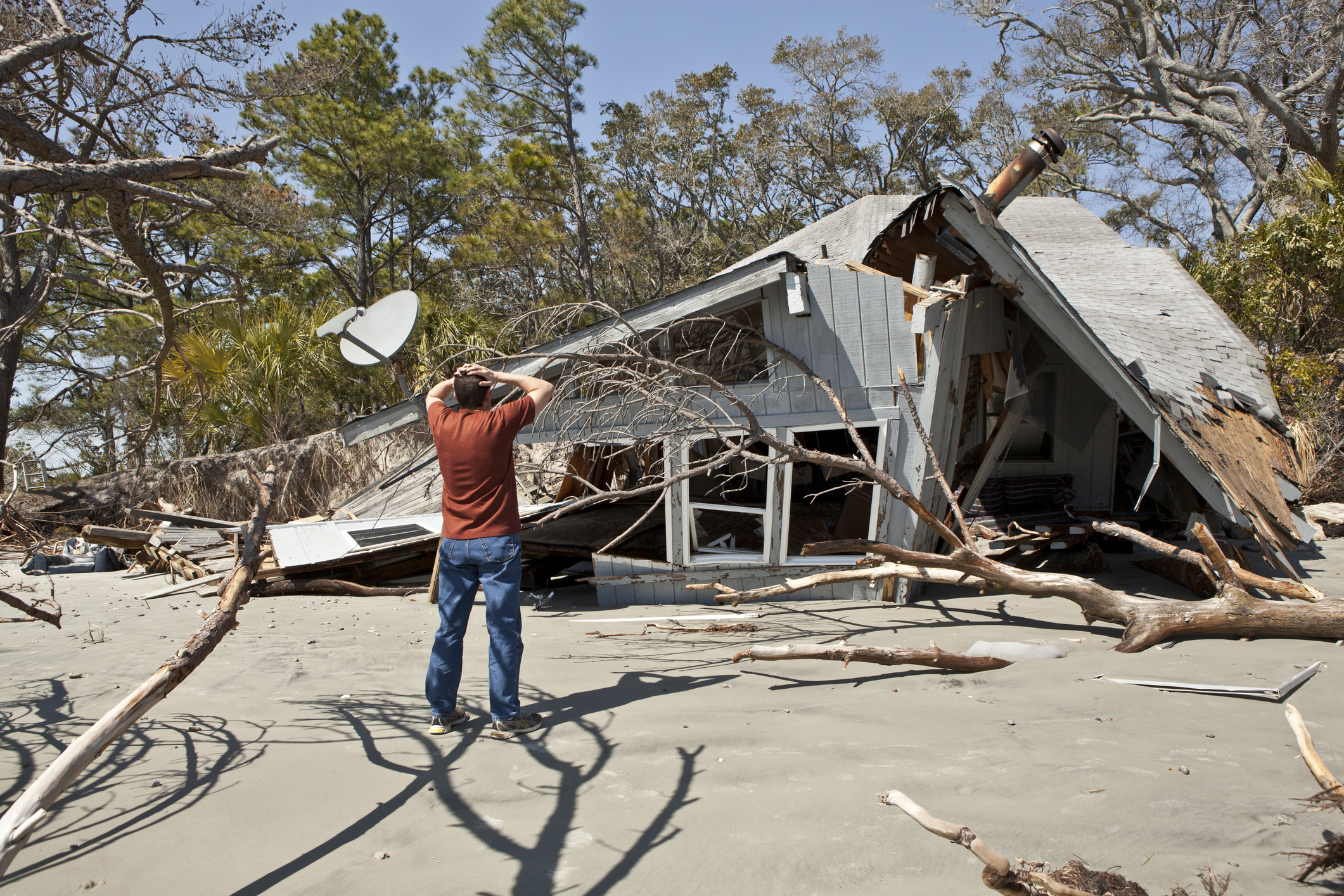 Hurricane Insurance Claims: 10 Things You Need to Know
Hurricane Insurance Claims: 10 Things You Need to KnowBecoming a Homeowner Hurricane damage? Know what your insurance will and won't cover to make the most of your policy if you need to file a claim.
By Kimberly Lankford



